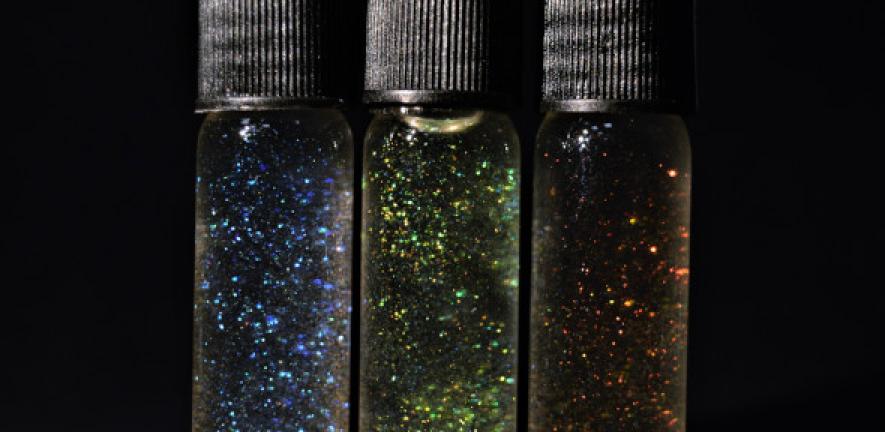
Glitter is a major pollutant, with the microplastic commonly found in sewage sludge as well as wastewater treatment plants, but now researchers have identified a type of sustainable glitter that has no impact on the environment.
In a paper published today in the scientific journal Chemosphere, researchers from the University of Cambridge and the University of Melbourne have demonstrated that unlike traditional non-recyclable plastic glitter, organic glitter made from cellulose is not toxic to living organisms.
While biodegradable glitter is already commercially available, previous research indicates these products could be just as harmful or even more toxic to aquatic organisms than conventional Polyethylene Terephthalate (PET) glitter, as most biodegradable varieties on the market need to be coated in a coloured aluminium layer and topped with a thin plastic layer.
Glitter made from cellulose
Researchers in the Vignolini group have developed a glitter made from Cellulose nanocrystals (CNC). Cellulose is one of the most abundant materials in nature and can be extracted from biological sources including cotton. The CNC glitter doesn’t require aluminium or plastic layers.
To determine whether their CNC glitter is more eco-friendly than conventional PET glitter, the University of Cambridge teamed up with researchers from the University of Melbourne to investigate and compare the levels of toxicity of both materials in terrestrial environments.
Soil critters
An experiment was conducted at the University of Melbourne’s Dookie campus, where different concentrations of both glitters were tested on a type of soil critter called springtail.
The findings revealed CNC glitter had no impact on springtails, however PET glitter severely impacted the organism’s fertility.
University of Melbourne Associate Professor Suzie Reichman, who led the research, said: “We found that neither glitter impacted springtail survival or size. However, once the concentrations of conventional PET glitter in the soil reached 1000 mg glitter/kg of soil, the reproduction of the springtails was reduced by 42 percent. In comparison, there were no toxic effects on springtail reproduction at any concentration of the CNC glitter.”
University of Melbourne PhD student Po-Hao (Paul) Chen said: “As springtails are an indicator of soil quality, it’s worrying that the conventional PET glitter affected their ability to reproduce. Fewer springtails being born can weaken their population, which might lead to bigger problems for soil health, like less organic matter breaking down and fewer nutrients being released for plants.”
Sparxell
Vignolini group spinout Sparxell is now in the process of creating a range of celllose-based glitters, sequins and films which contain no mica, titania or plastics and are entirely biodegradable.
Founder Professor Silvia Vignolini said: “There is limited research literature on the ecotoxicity of PET glitter, with only a few published studies focusing on aquatic organisms. Our research has shown that CNC glitter has potential as a biodegradable non-plastic alternative to decrease detrimental effects on soil ecosystems, which is a win for the environment and consumers.”
Research
Po-Hao Chen, Benjamin E. Droguet, Ian Lam, Dannielle S. Green, Silvia Vignolini, Zhuyun Gu, Shamali De Silva, Suzie M. Reichman, Assessing the ecotoxicological effects of novel cellulose nanocrystalline glitter compared to conventional polyethylene terephthalate glitter: Toxicity to springtails (Folsomia candida), Chemosphere (Volume 366, October 2024)143315.

